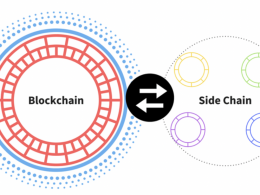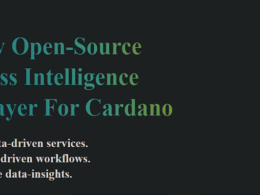The Basho Era is the era of scalability. You can read about Basho in an article I published in February 2022: The Basho Era: Scalability for Cardano in 2022.
Scaling is speed, performance and cost in the operation of a system, it is crucial for any blockchain, if it wants to maintain growth and competitiveness. Cardano’s current protocol, Ouroboros Praos, needs to work fast enough to run the myriad of decentralized applications now being implemented, or soon to be launched, on Cardano.
In a blog post published on February 28, IOG explained what changes we could expect to see in the June and October hard fork events: “Our February release is just the start. Throughout 2022 – and focused around June and October hard fork combinator (HFC) events – we will introduce an array of scaling enhancements. These include key elements of our scaling plan like pipelining, new Plutus CIPs, UTXO on-disk storage and Hydra. In combination with parameter adjustments, these features will enhance Cardano’s throughput and optimize the system to accommodate an increasing range of decentralized finance (DeFi) apps, smart contracts, and DEXs.“
In this article I will tell you about the Vasil hard fork, which corresponds to this Era, and is scheduled for June 29, according to this IOHK Tweet.
The hard fork got its name because Hoskinson decided to honor a recently deceased prominent member of the Cardano community, Vasil Dabov, who was a Cardano ambassador and blockchain consultant. In the following video Charles Hoskinson pays tribute to him: RIP Vasil Dabov.
What is a hard fork?
First I would like to explain what a hard fork is. A hard fork is an update to the consensus rules in the context of blockchain technology.
In some situations, this event could produce a fork in the network, in different blockchains with different nodes, that is, a division of the network due to dissent in the community of validators and developers. Among other well-known examples, this happened with Bitcoin and Bitcoin Cash due to disagreement on increasing the block size.
In the case of Cardano, the hard fork is not in danger of splitting the blockchain, it is not a “traumatic” event, because it is scheduled to implement improvements directed by the developer company, IOG, with the technology of the Hard Fork Combinator, created for this purpose, and is used to execute a smooth and frictionless transition in network activity.
Cardano successfully ran four hard forks, Shelley (July 2020), Allegra (December 2020), Mary (March 2021) and Alonzo (September 2021).
There are also soft forks, which are events that do not involve radical changes to the consensus rules, and maintain compatibility between updated nodes and nodes running older software.
On Feb. 1, John Woods, Director of Cardano Architecture at IOG, shared a post explaining pipelining, the main improvement to be implemented with the Vasil hard fork.
John Woods said: “Pipelining is one of the key elements that will support Cardano’s scalability this year. Combined, all of these changes will enable greater network flexibility capabilities as the ecosystem grows, making Cardano faster than its competitors and a highly competitive platform for decentralized finance (DeFi) later this year.”
The improvements that are projected in Cardano are related to the size of the block, since the larger the block, the more transactions and scripts it can carry. More computational resources will be allocated for a script to run more efficiently, with Plutus memory limits, the amount of memory available for a Plutus script to run, and Plutus CPU limits.
Enhancements Coming to Plutus in June
The scalability of the Basho Era consists of several enhancements. Along with parameter tweaks and node updates, Plutus’ capability continues to develop at a steady pace.
Plutus is the native smart contract language for Cardano. It is a Turing-complete language written in Haskell, and Plutus smart contracts are effectively Haskell programs..It is a living and evolving smart contract language, created by IOHK
Cardano Improvement Proposal, CIP, is a proposal that anyone can suggest on Cardano, and which is formally submitted to the Cardano Foundation’s GitHub, encouraging community participation.
Two CIPs, CIP-31 Reference inputs, and CIP-33 Reference scripts, for implementation on Cardano during Vasil, on Plutus improvements, which will boost the performance of decentralized applications (DApps), decentralized finance (DeFi), RealFi, the products, smart contracts and exchanges that are created and operated on Cardano.
CIP-31, Reference Inputs, introduces a new mechanism for accessing information in datums: a reference input. Reference inputs allow you to look at an output without spending it. This will make it easier to access information stored on the blockchain without the need to spend and recreate unspent transaction outputs (UTxOs).
The CIP-31 will also allow the other key improvement: the Reference Scripts of the CIP-33, by which reference inputs and outputs that carry real scripts will be used. The script referencing approach eliminates sending frequently used scripts to the chain each time they are used, and thus the scripts will be persistently available on the chain. This means that the transaction using the script does not need to include the script itself, as long as it references the output that contains it.
Pipelining Will Bring Higher Speed to Cardano
Pipelining is an enhancement to the consensus layer, which will streamline the flow of the Cardano network, facilitating faster block propagation, enabling even greater gains in free space, bringing further increases in the performance of the network and the competitiveness of Cardano.
Currently, a block goes through six steps as it moves up the chain:
- Block header transmission
- Block header validation
- Block body request and transmission
- Block body validation and local chain extension
- Block header transmission to downstream nodes
- Block body transmission to downstream nodes
Pipelining overlaps some of those steps, one on top of the other so that they happen simultaneously, to save time while increasing performance.
One of the design principles behind pipelining is to achieve faster block propagation, avoiding harsh chain changes, with full backwards compatibility, adding a new mini-protocol whose job it is to pre-notify nodes when a new block is seen. consistent block, before full validation. This saves a lot of time because it drastically reduces the time it takes to validate a block in multiple steps.
Increasing performance always comes with risks . Could broadcast pipelining affect the security of the consensus layers?
The quick answer is “no”, as the consensus layer is not affected by this change.
Consistent blocks are always valid, since the block leader validates the new block and thus the chain, to which it will be added, so incomplete blocks will not propagate.
Complete but invalid blocks, while possibly propagating through the network, will always be discarded by an honest node, after body validation.
Regarding denial of service (DoS) attacks at the network layer, which consists of the attacker trying to congest the system by broadcasting invalid blocks, it will be countered by the correct block slot leader, which is verified.
Furthermore, stakepool operators that generate invalid blocks can be easily identified and punished, in fact, a violation management system is currently being developed to perform exactly this function.
In the following table, there are performance estimates (in transactions per second, TPS). The throughput depends on both transaction size and validation time. For a selection of size/validation time pairs, assuming that all transactions have the same characteristics.
Final Words
The Cardano360 event took place on February 24, IOG announced that it was working on developing new products and features, from a DApp store, a new light wallet product, to the fast synchronization solution Mithril and sidechains.
The commitment and dedication of the community was also praised, which has contributed to the consolidation of a decentralized and robust ecosystem, through the development of new DApps, services, websites, tools and APIs.
Four days later, in a post on its website, IOG explained that the focus in 2022 is the Hard Fork Combinator (HFC) events in June, Vasil, and another in October, where a series of scalability improvements will be presented, among which there are essential elements for scalability such as Pipeline and new Plutus CIP, for Vasil, as I explained in this article, and UTxO disk storage and Hydra (second layer scalability solution) for the next hard fork.











